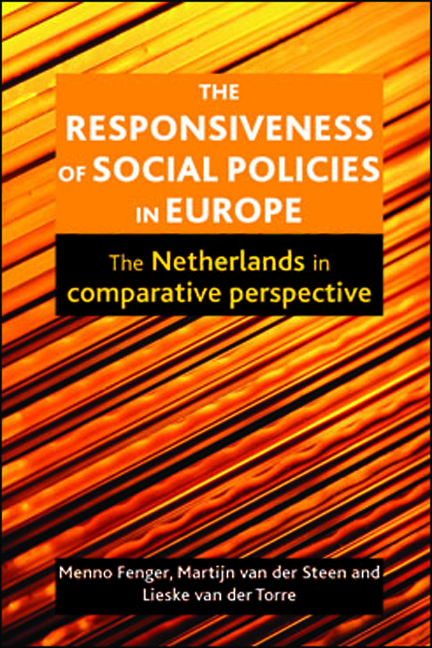Book contents
- Frontmatter
- Contents
- List of figures and tables
- About the authors
- Preface
- one Introduction
- two Responsive policies in contested welfare states?
- three A framework for analysing policy responsiveness
- four The responsiveness of social assistance policies
- five The responsiveness of labour migration policies
- six The responsiveness of sheltered work policies
- seven Conclusions: the responsiveness of social policies in three domains
- References
- Index
five - The responsiveness of labour migration policies
Published online by Cambridge University Press: 01 February 2022
- Frontmatter
- Contents
- List of figures and tables
- About the authors
- Preface
- one Introduction
- two Responsive policies in contested welfare states?
- three A framework for analysing policy responsiveness
- four The responsiveness of social assistance policies
- five The responsiveness of labour migration policies
- six The responsiveness of sheltered work policies
- seven Conclusions: the responsiveness of social policies in three domains
- References
- Index
Summary
Introduction
The ever growing global mobility of labour, partly caused by the enlargement of the European Union, presents important challenges for national labour markets. Moreover, the role of labour migrants is heavily debated in the media and politics in many European countries. This chapter analyses to what extent and how European countries in general and the Netherlands more specifically have adapted their labour migration policies to these challenges. This case illustrates the impact of what can be called the import of normative discussions from other domains on responsiveness. Strictly interpreted, the Labour Migration Act (December 21, 1994) regulates supply in the labour market from an economic perspective. However, the issue of labour migration seems to be affected by incidents that attract a lot of media attention. This chapter shows how responsiveness is the outcome of a process of policy formation and implementation, but also of dealing with the turbulence of unrelated but extremely relevant debates and incidents from outside the policy field.
The structure of this chapter mirrors that of the previous chapter. First, we identify some general trends in European labour migration policies and from this distil some general conclusions about the way European countries responded to the challenges in their institutional environment. After that, we analyse in depth the evolution of the Dutch labour migration regime. Finally, we integrate the insights of the Dutch case with the analysis relating to other European countries and draw some lessons about the responsiveness of labour migration policies in Europe.
European trends in labour migration policy
Labour migration policy generally involves two streams: the legal immigration of foreign nationals, and temporary and labour market migration. In legal immigration, immigrants come to a country to settle and become permanent residents and citizens of the county; in labour migration, immigrants come to work and intend to leave after their work is completed or otherwise terminated. Immigration is about settlement, labour migration about work.
This section discusses the three logics of responsiveness with regard to labour migration policy at the EU level and in the various EU member states. We review and discuss the most important developments in the policy system, developments in the policy environment and trends in public preferences towards labour migration. In addition, we discuss the dynamics of labour migration policies at the EU level that are a crucial factor for understanding the development of countries’ labour migration policies.
- Type
- Chapter
- Information
- The Responsiveness of Social Policies in EuropeThe Netherlands in Comparative Perspective, pp. 95 - 134Publisher: Bristol University PressPrint publication year: 2013



